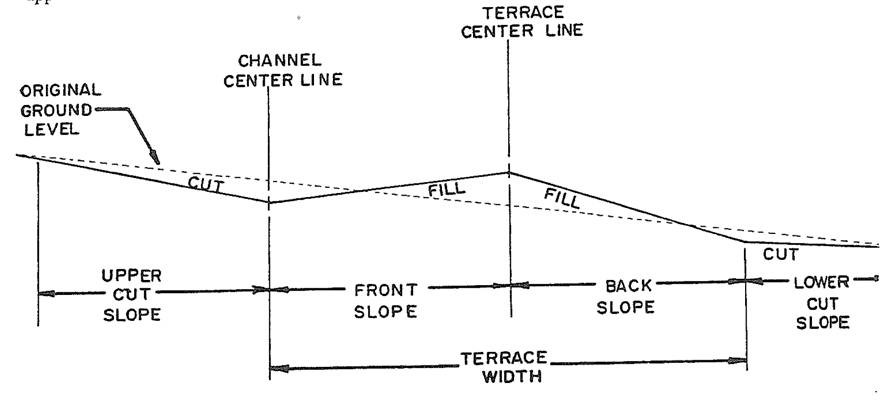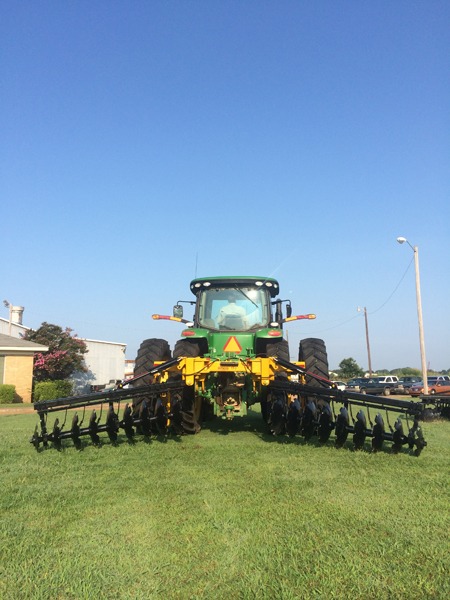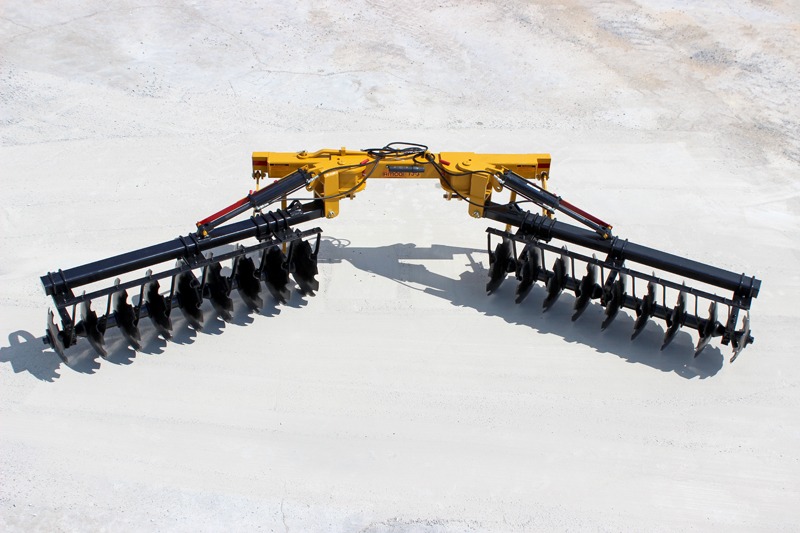
A diagram of terrace construction
With harvest over, it’s time to start looking to next year’s planting season, and that means terrace construction.
Terracing is a great way to conserve water and soil and prevent erosion, especially for growers who live in regions with heavy precipitation. But before you dive in and start building your terraces this spring, you might want a quick refresher on terrace construction. To help you out, AMCO has created this guide to narrow-base terrace construction with our exclusive Terracing Plow.
 PHASE 1: BREAKING GROUND
PHASE 1: BREAKING GROUND
Begin shaping your terrace by making one or two passes along the terrace centerline. Make these passes 4 to 6 inches deep, with both gangs set at 10 to 11 inches on the tilt indicators.
Tip: You’ll get the best results if you keep your tractor speed at 5 miles per hour or above. Faster speeds boost the upward and inward movement of soil on the terrace, reducing construction time.
PHASE 2: MOVING SOIL
After you’ve broken ground, use one gang to move soil from the areas on each side of the terrace into its base. You can do this by lowering the right-hand gang and operating the left-hand rear tractor tire just to the right of the terrace’s centerline. The gang should extend 4 to 6 feet beyond the furrow made by the outside disc blade on the previous pass. For this step, set the tilt indicator to 11 or 12 inches.
Repeat this step 2 or 3 times on both sides of the terrace. You’ll know you’re ready to move on when the soil has been worked inward enough so that the tractor is almost centered on the terrace.
Tip: To prevent one gang from taking more wear than the other, occasionally flip directions and use the left-hand gang to move soil.
PHASE THREE: KEEP MOVING AND SHAPING
Set both gangs at 12 or 13 inches on the tilt indicators. Make several passes, increasing the gang tilt by about 1 to 1½ inches on each pass. Continue to build and shape the terrace until you reach the desired height. Then make one more pass with the tilt set at 15 inches to smooth the side slopes and “crown off” the terrace.
Tip: Tilt the gangs so that all the blades are moving soil. If only one end of the gangs is moving soil, increase or decrease the tilt cutting is even.
PHASE FOUR: PREPARE FOR CROPPING AND EROSION CONTROL
Even after the terrace is built, you’ll probably have to make a few more adjustments with your Terracing Plow. One thing you may have to do is smooth and broaden the terrace channel and back slope furrow for cropping. You can do this with a disc harrow or another type of equipment.
Investing time in quality terrace construction helps ensure a successful planting and growing season. If you have any questions about terracing or about the AMCO Terracing Plow, our tough tillage experts are happy to help!

AMCO TERRACING PLOW
When building a terrace, it’s essential that you use durable, high-quality equipment that’s up to the job. AMCO is the only company that offers a plow specifically designed for terracing. Capable of building 1,000 feet of terraces or more per hour, the AMCO Terracing Plow is significantly faster than using a bulldozer or other types of heavy construction equipment. It easily fits with your equipment and can be operated by a single driver, saving you time and money. The AMCO Terracing Plow also works within Soil Conservation Service (SCS) specifications.
AMCO’s Terracing Plow can handle both narrow-base and broad-base terrace construction. It builds and packs the terrace with multiple trips through the field. In addition to building new terraces, the AMCO Terracing Plow tool can easily refurbish older terraces.
Visit our Terracing Plow page for more features and for photos of our plow in action.
Did you know?
AMCO Terracing Plows can also be used for narrow-base and broad-base terrace construction.